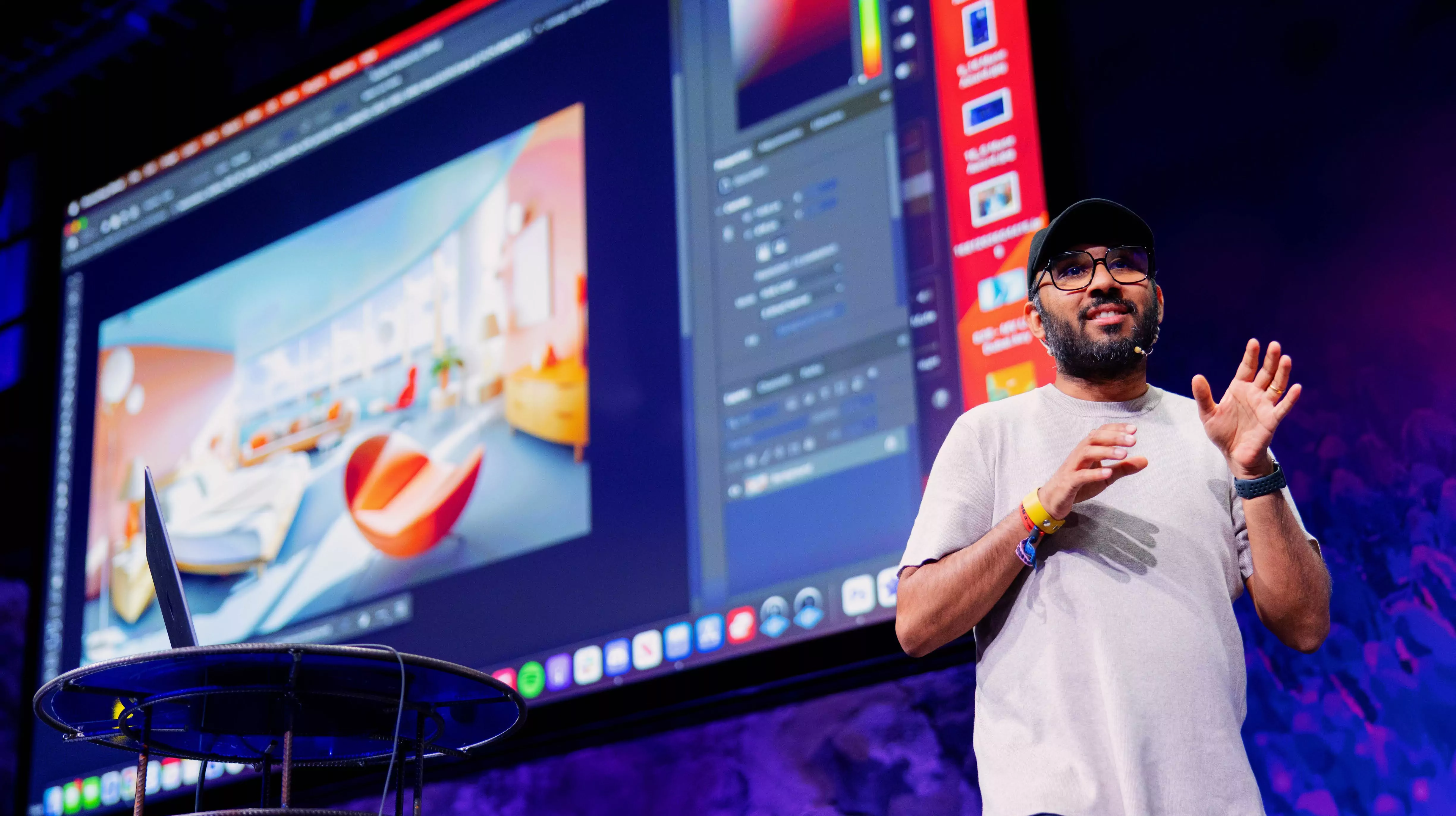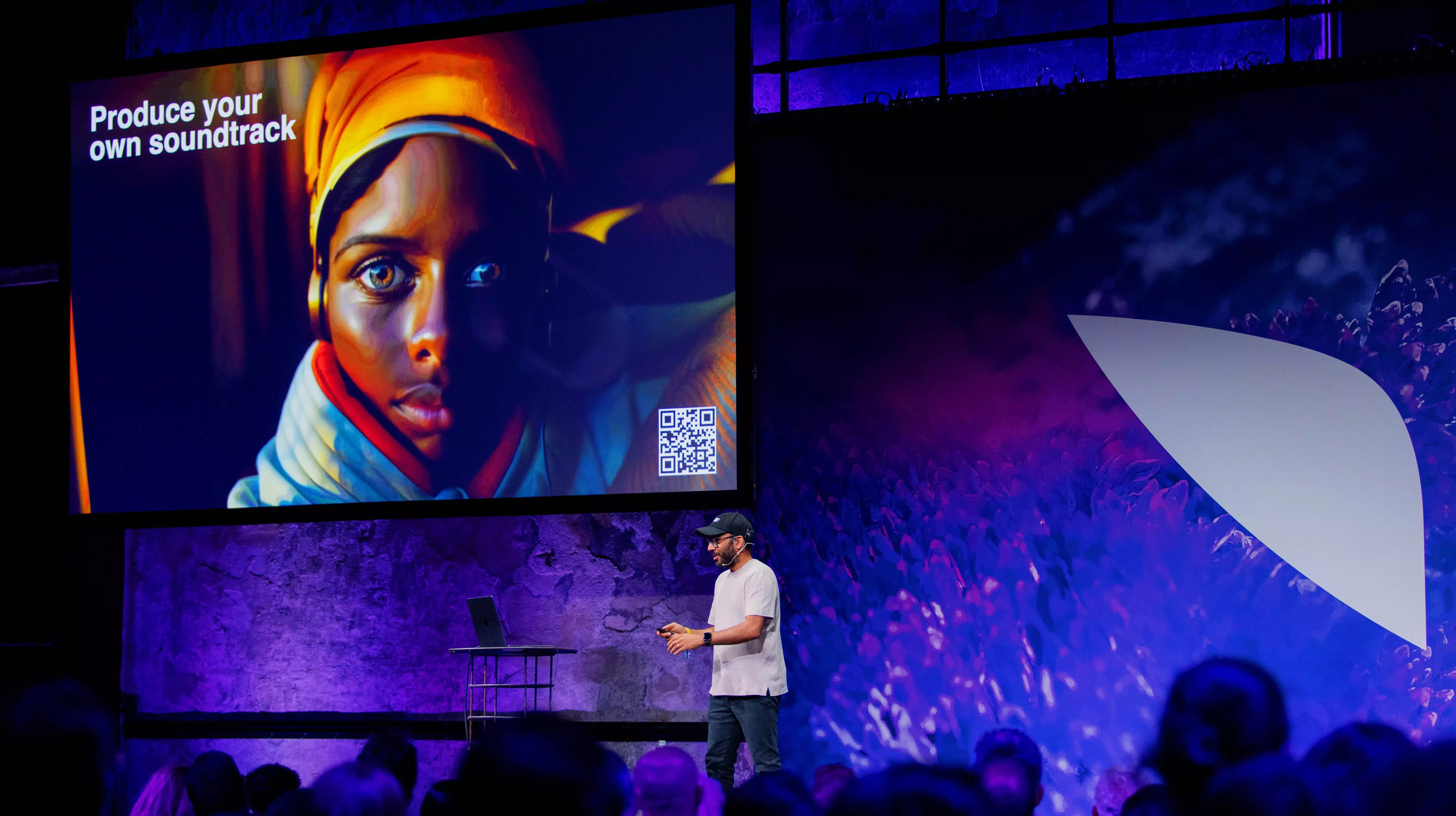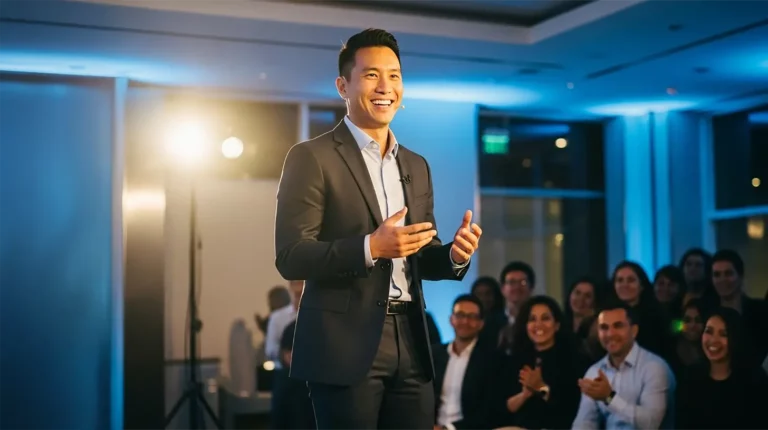Is it real? Or is it AI?
These are questions you might ask yourself nowadays, especially when it comes to art. You could be looking at a piece so breathtaking that it makes your heart flutter. And then you find out it’s created by—drum roll—artificial intelligence (AI).
The reality is, AI is no longer just about productivity and data analytics. The creative world is getting into it, too.
Welcome to the future, where technology and creativity blend seamlessly.
But what is AI art, really? How can something that could be in the realm of sci-fi be considered art? And how can you use this new (and unexpected) maestro?
Without a doubt, it’s here to stay. And it’s a great time to learn how you can use it to your advantage.
As Vishen, the founder of Mindvalley, always asserts, AI will not replace you; instead, someone who knows how to use it effectively will.
What is AI art?
Simply put, AI art is an innovative form of creative expression—one that’s used to generate art. This could range from visual art, poetry, and even music.
If you’re hearing the term “AI art” for the first time, you may wonder: How can a computer program create something as intrinsically human as art? Is it even possible?
It isn’t a simple case of a machine mindlessly churning out pieces, though. Instead, it’s more of a blend of:
- Complex algorithms,
- Vast datasets,
- Machine learning principles, and
- Human input.
This fascinating world isn’t just reserved for tech enthusiasts or professional artists. Even if you haven’t picked up a paintbrush since elementary school or if coding sounds like a foreign language, you can still participate in this revolution.
“We get the chance to imagine again,” says Manon Dave, the chief product officer at Mindvalley and a multi-award-winning and Oscar-shortlisted producer, at the Mindvalley AI Summit 2023. His stage talk gave an exciting glimpse into this new world and how you can push the boundaries of what’s possible creatively.
“Now, really, it’s just about who has the best imagination,” he adds. “And if you can partner that imagination with the right skills and the things that you’ve worked at for years and years, then you can do some pretty awesome things.”
So the question “What is AI-generated art?” may initially lead you to marvel at the capabilities of the machines. But eventually, it can also prompt you to appreciate the human creative intelligence behind the code.

How does AI art work?
At its core, AI works on the principles of machine learning and deep learning. Its algorithm, often a type of neural network, is “trained” using a large database of art examples. It learns to recognize patterns, styles, and elements in these examples and then uses this knowledge to create something new.
This process can be compared to how a human artist might learn—by observing, practicing, and experimenting with different styles. However, unlike a human artist, AI doesn’t possess emotional intelligence or subjective experiences. Instead, it creates based on patterns, not on feelings or personal interpretations.
What is an AI art generator?
Just as the name suggests, an AI art generator is a tool that leverages AI to create unique pieces of art.
These generators are the outcome of significant advancements in machine learning, particularly in a subfield called Generative Adversarial Networks (GANs). These GANs can create new data (in our case, art) that can mimic any given style.
To understand the significance of an AI art generator, imagine you’re standing before a blank canvas. And you’re armed with the collective artistic styles of Van Gogh, Frida Kahlo, and Monet.
An AI art generator empowers you with the ability to create a piece that borrows styles and elements from these masters while also adding a unique flavor of its own. The output isn’t a mere replica but a new creation, an amalgamation of various styles seen through the lens of AI.
Despite this, it has the ability to generate stunning art pieces that are both impressive and a bit unsettling. It challenges our traditional understanding of creativity and the human-exclusive nature of art.
So, is this a threat to human artists? While statistics show that a high number of people are concerned they’ll lose their jobs, it’s also projected that AI will create 97 million new jobs.
And so, as Vishen pointed out in his stage talk, AI should be seen as a tool to enhance human creativity and productivity, not replace it.
What is the best free AI art generator?
“You can just make really interesting content very, very quickly with a handful of tools,” Manon says. And so, if you’re looking to experiment with AI art, here are some free generators he mentions in his stage talk at the Mindvalley AI Summit 2023 that are available online.
1. Midjourney
Midjourney is a tool that creates pictures from written descriptions. It’s like an artist who reads your words and paints a picture based on them.
This tool is trained to understand our language and how to turn words into pictures that look real and creative. It’s still being improved, but it has already made some amazing pictures, including ones of landscapes, people, and abstract art.
2. Adobe Photoshop
It’s more than likely you’ve heard of Adobe Photoshop. However, there’s an AI aspect to it that you can use to make, change, and play around with pictures.
For example, you can take an image of a woman holding a Coca-Cola bottle and change the bottle from a Coke bottle to a water bottle. Or you can take a picture of yourself and add, let’s say, sunglasses.
There are so many variations you can do—change colors, add cool effects, and mix different pictures together. It’s also a popular tool for making digital art and drawings.
3. Skybox AI
Who doesn’t like something that’s super realistic? That’s the power of 3D, and Skybox AI is the tool to create such art.
It uses a powerful AI, trained on lots and lots of text and 3D models, to understand your words and turn them into realistic and creative 3D environments. And it can create scenes like forests, cities, or even alien planets—all from a simple text description.
Even though it’s still under development, Skybox AI has already been used to make some really cool 3D places.
4. MusicLM
Now, for you music lovers, dive into your creative juices with Google’s MusicLM. This smart music maker takes your words and turns them into original tunes.
The tool uses a really smart AI, trained with loads of different music, to understand your words and make music that’s fresh and exciting.
While it’s still being improved, MusicLM has already been used to make all kinds of music. And you can get to creating all kinds of tunes, from songs to soundtracks.
5. Runway ML
When it comes to creating different types of media, like videos or text, RunwayML is a platform that can help. This advanced AI tool allows you to create, publish, and use AI models to generate realistic images or write image captions.
The platform operates by identifying patterns in your data and creating a model to execute tasks. What’s more, it seamlessly integrates with other software, like Adobe Photoshop.
And the best part? You don’t need to be a coding expert or have super-powerful hardware to use it.
How to make AI art
Learning AI can, without a doubt, be daunting at first, especially if you’re new to it. But if you’re geared up to start creating your own machine-generated art, here’s where you can start:
- Choose your tool. Choose an AI program that suits your needs. Some are more user-friendly for beginners, while others offer advanced features for more tech-savvy users.
- Provide input. It’s all about the prompts. By feeding the AI with your unique text prompts, you effectively guide its creative process and influence the outcome of the generated art.
- Select your style. Most AI art generators let you choose the style you want to mimic. This could be the style of a specific music movement or even a photo of a piece of art you’ve taken. Be mindful, though, of the legalities of AI.
- Let the AI work. Once you’ve provided the input and chosen your style, it’s time to let the robot do its magic. It will analyze the input and generate a new piece of art based on the patterns and styles it has learned.
- Download and share. After the AI has created your art piece, you can download and share it. Some platforms also offer the option to print your AI-generated artwork on various products.
In a nutshell, using this type of intelligence is an excellent way for anyone to dabble in art, even if you don’t consider yourself an artist.
How to use AI art
AI art has many uses beyond just creating pretty pictures or sick beats. It’s a powerful tool for creative exploration, education, marketing, and even self-expression.
- In education. AI art can be used to teach students about art history, styles, and techniques. By interacting with different types of programs, students can see these concepts in action and gain a deeper understanding.
- For businesses. AI-generated art offers a unique way to stand out in the market. It can be used to create eye-catching marketing materials personalized for individual customers. Additionally, it can be used to develop a unique brand aesthetic that aligns with the company’s voice and values.
- For therapeutic uses. Art therapy has long been recognized for its healing benefits. Using AI in this instance allows people to express their feelings and thoughts in a new, accessible way. For those who may not have the skills or confidence to create traditional art, taking the digital route can be a gateway to self-expression.
The exciting part about AI art is the limitless opportunities to experiment. As Iman Oubou, an award-winning entrepreneur and published scientist, points out at the Mindvalley AI Summit 2023, “These tools are only as powerful (or maybe as dangerous) as the people who use them.”
AI: Artistic intelligence
When it comes to artistic expression, AI pushes us to redefine creativity. It pushes us to question the exclusivity of human-made art. And it pushes us to ponder the relationships between man, machine, and innovation.
As we grapple with these questions, it’s important to remember that AI, in its essence, is merely a tool and a product of human creative intelligence. It isn’t replacing our creativity; instead, it’s helping us find new ways to express and explore art.
A great way to get there is at Mindvalley.
“Right now, with AI, there’s a huge opportunity to improve the way you work, to free up time, to create better products, [and] to change the businesses that you run,” says Vishen. That includes art, too.
All at the clickety-clack of your keyboard.
Welcome in.







